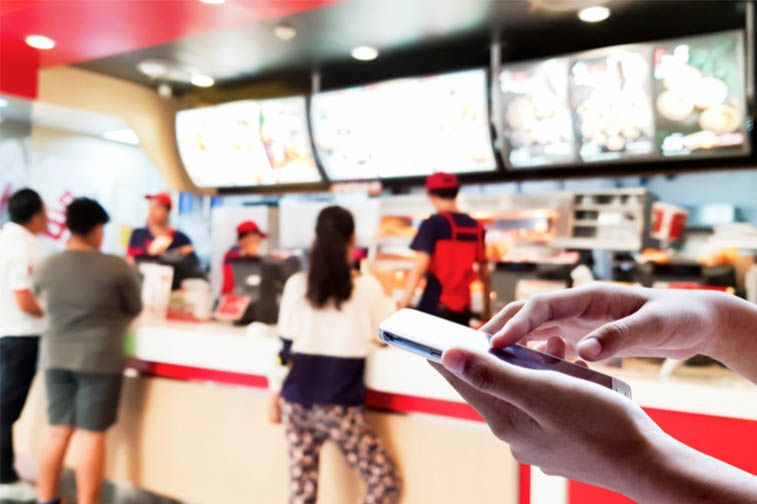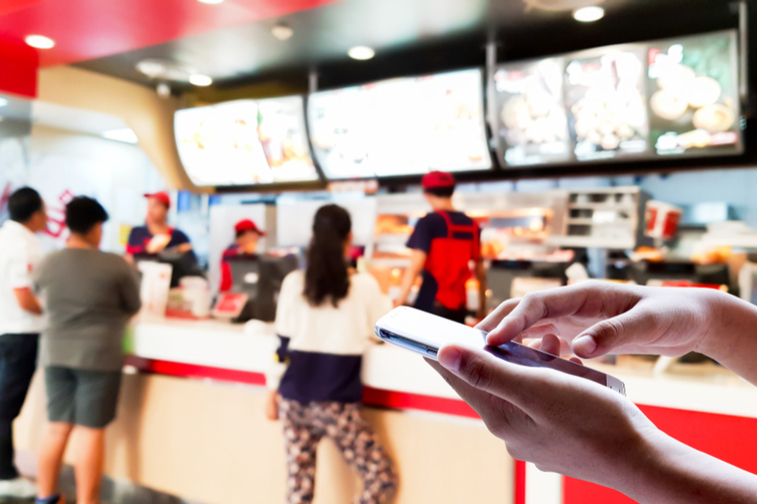Digitalizing quick service restaurants to create a seamless customer experience


Can a technology-first approach help re-imagine the Quick Service Restaurant (QSR) customer journey, provide tailored experiences, and match the expected instant gratification standard of modern consumerism?
With people eating out more than ever due to convenience and busy schedules, quick service restaurants need to determine how to stand out from the crowd to attract various age groups. Industry challenges are compelling QSR players to rethink the way they envision their restaurants and discover new ways to further engage their customers. Included in these industry challenges are empowering their already tech-savvy customers, rising competition in comparable segments, and increasing complexity at various touchpoints.
Tech-savvy millennials have emerged as a major consumer segment, seeking and determining their purchase decisions based on personal, tailored experiences. Quick service restaurants are striving towards enhancing convenience and providing a personalized buying experience outside the restaurants through mobile and customer identification technologies to specifically cater to this new market.
Faced with a seemingly endless array of choices, consumers are experimenting with services focused on speed, usability and affordability. From online home delivery or digital drive-thrus to contactless payments or self-service kiosks, digital innovation is disrupting how and what we eat.
By embracing new technologies and presenting the customer with the flexibility to dine in, take out or home delivery, restaurants have an opportunity leading to build incremental revenues and new business.
A recent Zion Market Research report, predicts that the global QSR market will grow to nearly $691 billion in the next five years, an anticipated CAGR of more than 4.2 percent between 2017 and 2022. The future might look opportunistic and paved with challenges, but the road ahead is insight-driven with digital solutions that will help restaurants anticipate and address shifts in consumer preferences and behaviour.
Trending: Digital Drive-Thrus, Curbside Pickups and Flexible Delivery
According to a recent QSR magazine study, as much as 50 - 70% of a quick service restaurant’s revenue comes from the drive-thru. The most performance indicators in play are drive-thru order speed and accuracy. Digital technology such as beacons, Automatic Number Plate Recognition (ANPR), voice-based ordering, and mobile powered curbside pick-up are likely to improve speed and accuracy. In reality, these technologies will not have the desired results unless viewed through a holistic customer experience lens. Build digital ecosystems that combine these independent technologies will ultimately offer a truly seamless customer experience.
For example, a customer drives into the drive-thru lane, is recognized as a repeat customer through ANPR and relevant information is displayed on the outdoor digital signage. The customer places a voice-based order for the “regular,” which is a large cheeseburger with a side of fries, is offered a promotion to make it a combo by adding a bottled drink. As the customer reaches the pick-up counter, the order is either ready for pick up, and payment is processed through mobile contactless payment or is guided towards the pick-up bay where a staff member will deliver the order.
Building order-ahead capabilities, rewards programs, and having a committed approach to customer experience will not just enhance order speed and accuracy but will also result in upsell opportunities and most likely repeat business.
In conjunction with drive-thrus, curbside pickup and delivery options are gaining momentum. Incorporating technology-centric perks and identifying ways to influence higher levels of convenience for customers will propel quick service restaurants to the next level.
Digital Deliveries take “Quick” to a new level
Innovative digital technologies and changing demographics are disrupting the landscape of the QSR industry. Tech-driven millennials, representing over 20% of the US population, are influencing consumer expectations and preferences on a macro level. Where fast food and fast-casual once meant delicious and affordable food delivered to the customer waiting in line, millennial and their contemporaries now expect a different QSR experience with their meals delivered directly to their home.
And the industry is taking notice. Several large food chains and companies have already begun offering home delivery through online platforms – Yum brand’s by investing $200M in Grubhub, Wendy’s partnering with Doordash and McDonalds with Uber Eats. As a result, food delivery service is forecasted to soar into the double digits—12% per year over the next five years.
Even so, there is still a bit of friction within QSR’s mobile platform. To place home delivery orders, customers must download the delivery partner’s mobile app. QSRs risk losing customers to app fatigue or alternative food options that could influence customer orders. The best way for industry players to remain competitive within this new reality is to adopt an online delivery platform that reduces the number of clicks/taps to order for a completely seamless, enjoyable customer experience.

Joseph Lanners is the Director of Retail Innovation at Samsung SDS America.
- Four Big IT Transformations for Enterprise Agility
- An Agile Approach, the Core of Corporate DT for Working Culture Innovation
- Digital ESG, a Critical Success Factor for ESG
- Conversational AI War Begins. Who Will Be the Winner?
- What Is Matter, the New Smart Home Standard?
- 2023 Forecast for Technology Trends